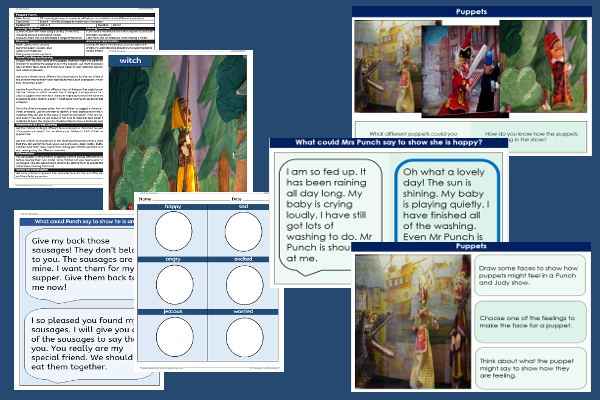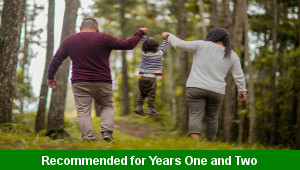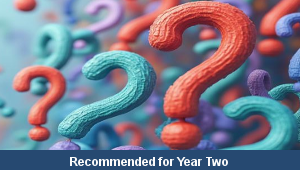Lesson Three – Puppet Faces

This design technology teaching pack for Key Stage One gets the children to investigate and record some of the special ways of creating facial features on puppet models to show different expressions and emotions.
The class can suggest and illustrate how puppets might make facial expressions when saying different lines as part of a performance from a scene of a narrative story.
Download this teaching pack including a lesson plan, classroom activities and an interactive presentation to investigate and record some of the special ways of creating facial features on puppet models to show different expressions and emotions
Activities in this teaching pack include display posters to describe facial features used on models to show different expressions, a shared reading text to identify emotions that can be shown through different dialogue sentences and a worksheet to select and record facial expressions that can be used on a puppet to illustrate emotions.
The interactive presentation can be used to explore and record special ways of creating facial features on models to show different expressions and emotions.
This lesson is part of a design technology scheme of work to get the children to select, shape and combine textile and other materials to make a range of puppet characters that can be used to narrate a traditional story. There are teaching activities for shared learning, differentiated worksheets to support independent learning and interactive presentations to introduce concepts and key skills.
-

Maths Measurement Assessment
Assess abilities in estimating, measuring and comparing a range of different measurements for length, mass and capacity
-

Family Life
Investigate and reflect on some of the special events and experiences that might happen in the life of a family
-

Final Sounds Word Guess
Practise playing some guessing and matching games to identify the spelling and meaning of words with different final sounds
-

Building Reports
Explore how to collect facts and information to work with when composing and presenting non-chronological reports about buildings that can be found in the local area
